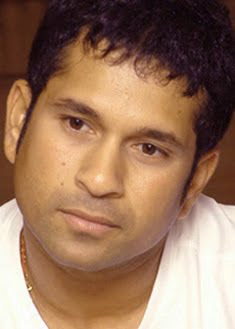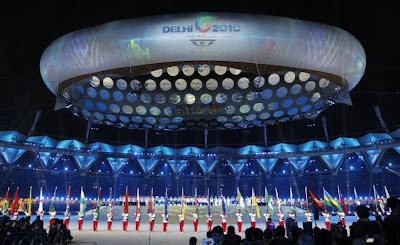
The recurring suspicion that the national cricket team is driven more by individual preferences than the collective interests of the group has surfaced yet again. The timing is rather unfortunate, when’s India 77-year-road to the top of Test rankings is being washed away by a very English tsunami that has also drowned reputations. It’s near-heresy, the most blasphemous question of all: has the great Sachin Tendulkar been protected at the expense of the team? More bitter still: do his performances in crisis situations match his credentials?
No recent incident underlines this gnawing doubt better than the batting line-up sequence after Abhinav Mukund was dismissed off the first ball of India’s reply to England’s 221 in the second Test of the ongoing series. With an injured Gautam Gambhir sitting out, Virender Sehwag recuperating from injury, and long-time No 3 Rahul Dravid already having come out to open, most followers justifiably expected Tendulkar, on the threshold of his hundredth international century, to defend India’s aspirations of world domination. God does not play dice; in walked VVS Laxman, the No 5.
India’s capitulation in the Nottingham Test has been dissected by every commentator, talking head and blogger; but for some reason, the focus has not been on why Tendulkar’s batting position is so non-negotiable. This is curious, and not the least because Tendulkar opens the batting in ODIs and T20s, and an opener in one form of the game should be good enough for the others. Former opener WV Raman argues that “it is from the No 4 position that he has scored the majority of his runs; there is no point in shuffling him around”. Hark back to 2006, however, when Greg Chappell’s suggestion that ODI opener Ganguly, not Dravid, should open in the third Test against Pakistan at Karachi, led to an animated argument between the two batting stars right before the match. Was the same logic at play then?
What then was behind the promotion of Virender Sehwag as opener in Tests after he had clicked in ODIs? Says former opener Chetan Chauhan- “Tendulkar is technically equipped to face the new ball in all conditions. If he opened the innings in Tests, his record could possibly have been even better than it is now.” And yet, Dravid and Laxman continue to be thrust into unfamiliar positions while Tendulkar is allowed to stick to his batting position. This is not to say that Sachin is completely rigid about his batting position, as ex-teammate Pravin Amre reveals: “During India’s tour of South Africa in 1992-93, he volunteered to open the innings but the team management insisted that he bat at No 4 as he is best suited for that position. Then, in 1999 against New Zealand at Ahmedabad, he opened the innings in a bid to set a target for the opposition.” But Amre also says: “With his technique, he can play anywhere in the order and still score runs.” So why hasn’t Tendulkar been more flexible with his batting slot in crucial match situations, especially when statistics (see box) prove that Tendulkar at No 4 doesn’t really bring anything to the table that other No 4s haven’t?
Considering those who have played 5 Tests or more in that position since 1984, the No 4 spot in India’s Test line-up has been occupied by Mohinder Amarnath, Dilip Vengsarkar, Mohd. Azharuddin, Rahul Dravid, Sourav Ganguly and VVS Laxman, apart from Tendulkar. Taking certified minnows Bangladesh out of the equation, in 233 innings at No 4, Tendulkar averages 55.21. The others, together, have played 131 innings at No 4 for an overall average of 54.20. The comparison is not skewed as the number of innings is statistically large enough on both sides. In fact, all the other players named have their best average playing at No 4, meaning it is the middle-order Test position allowing most runs to be scored, what with demons in the pitch, if any, having been
ironed out, the ball having become older and less effective, and the bowlers tired. Unlike Ganguly and Laxman who, for a major part of their careers, have had to bat at numbers 5-7, Tendulkar has always had enough top batsmen left to lend support at the other end without having to worry about protecting the tail.
Similarly, the opener’s spot in ODIs gives Tendulkar the opportunity to take advantage of field restrictions early on, against a white ball that moves relatively less in the air than the red cherry used in Tests, and gives him enough time to score centuries without having to bear the burden of finishing strongly for
an Indian victory.
In other words, infrequent accusations that Tendulkar plays for personal milestones and not the team actually have a statistical face. That, however, does not rule out argument and there is much logic in Tendulkar batting where he does. As former cricketer Lalchand Rajput says: “In limited-overs cricket, your best batsman should ideally face the maximum number of deliveries possible. Ever since he was promoted to open the innings in ODIs, Tendulkar has helped India win numerous matches. Why would anyone want him to bat down the order in ODIs? Greg Chappell made him do that and India suffered because of his decision.”
It was during his controversial reign as coach (2005-07) that Guru Greg, in the first ever such instance, hinted at Tendulkar’s fallibility and forced him to play a few ODIs at No 4 instead of his preferred opening slot. What this did was bring debate about Tendulkar’s effectiveness into the public domain. Not surprisingly, the first of the media obits on Tendulkar’s career started appearing around that time. Of course, Tendulkar responded in style to criticism and has grown in stature in the eyes of the world at large.
A lot has been written about Tendulkar’s ‘selfishness’ or ‘selflessness’, depending on which side of the fence you are on but it is clear that for a major part of the first decade of his career, he carried on his shoulders the hopes of the team. However, from around the time Ganguly became captain in 2000, and India’s Eden Gardens turnaround of 2001 against Australia, certain things have changed. India had a settled and strong middle order, a reasonably strong bowling line-up, and most importantly, had the confidence to be serious contenders for the world crown. Crucially, India could fall back on a certain Najafgarhi with a bludgeon for a bat, who styled himself after Tendulkar. It is this second decade of Tendulkar’s career that injuries took a toll, forcing him out several times. His form started showing signs of mortality, though, he would recover every time and come back all guns blazing. “The people who question Tendulkar’s ability are either ignorant or have a personal agenda. Even some experts suffer from short-term memory. He has been playing for the past two decades and has come to India’s rescue on many occasions. But he too is human and can fail. Unfortunately, when he fails, people pounce on him,” says ex-cricketer Arshad Ayub. There is, of course, much sense in this observation.
It doesn’t slay, however, the demon of doubt about Tendulkar’s impact on Team India’s fortunes. In the new millennium, he has scored 12 Test centuries against all opposition in matches that India has won, while 8 other tons have fetched draws or losses (success rate: 60 per cent) in comparison to another modern great, Ricky Ponting, in whose case, 21 of the 29 centuries he has scored since 2000 have resulted in wins (success rate: 72.4 per cent). The numbers are starker still in ODIs since 2000, where 23 out of 25 centuries by the Australian have resulted in team victories while only 12 of Tendulkar’s 21 centuries have resulted in victory for Team India. While it is true that the Australian team Ponting played for was far superior than the Indian team Tendulkar played for, and thus can be used in the latter’s defence, further analysis reveals more hiccups. In the last 10 years, India has won 102 of 186 ODIs played with Tendulkar in the team, a success rate of 54 per cent. Without him in the same period, India won 66 out of 124 ODIs, a success rate of 53 per cent. On this basis, Tendulkar’s presence has only had a marginal impact on India’s winning record. Contrast this with Sehwag, whose 14 centuries have resulted in 13 ODI victories for India.







